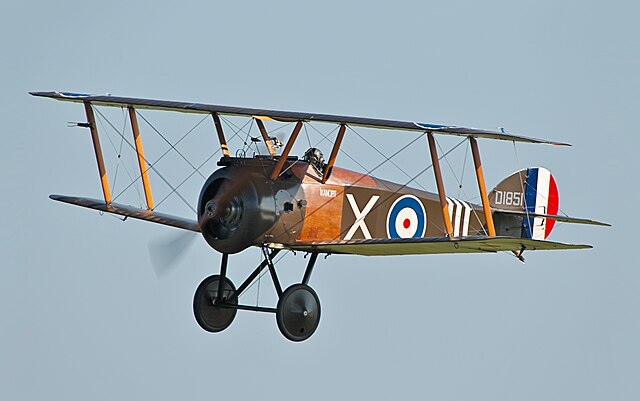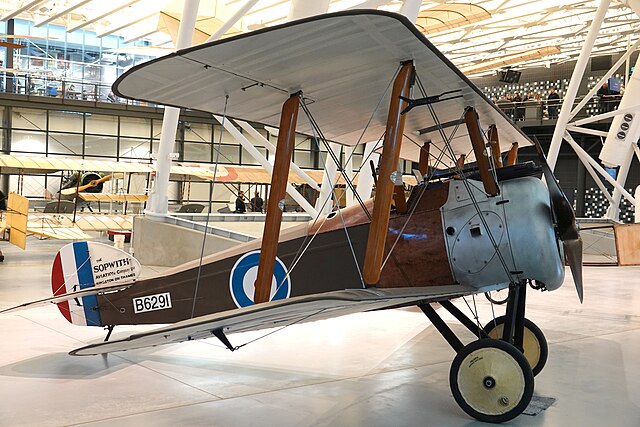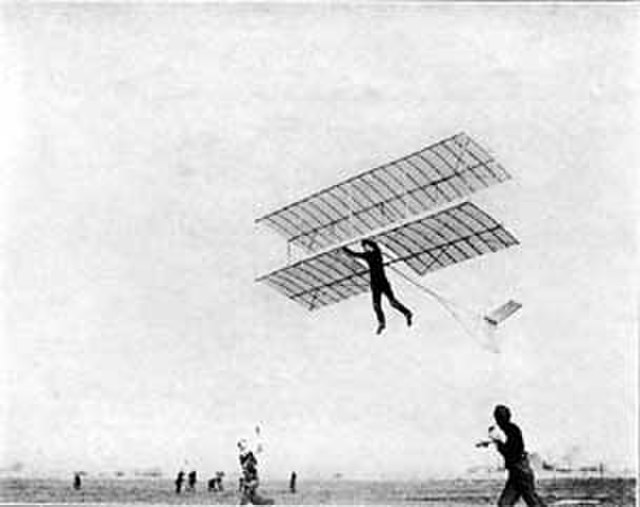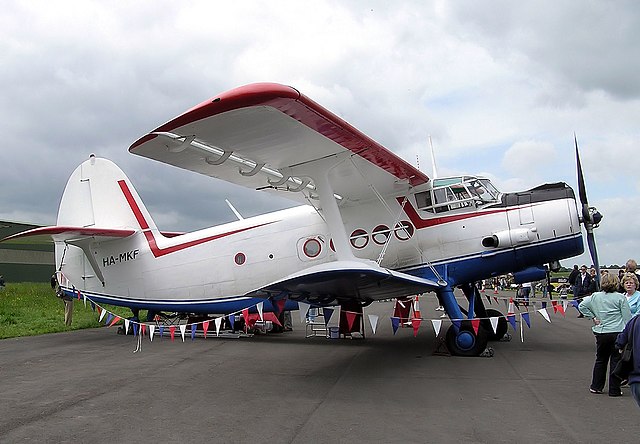The Sopwith Camel is a British First World War single-seat biplane fighter aircraft that was introduced on the Western Front in 1917. It was developed by the Sopwith Aviation Company as a successor to the Sopwith Pup and became one of the best-known fighter aircraft of the Great War. In total, Camel pilots were credited with downing 1,294 enemy aircraft, more than their counterparts flying any other Allied fighter of the conflict. Towards the end of the war, the type also saw use as a ground-attack aircraft, partly because the capabilities of fighter aircraft on both sides had advanced rapidly and left the Camel somewhat outclassed.
Sopwith Camel
Harry Cobby sitting in the cockpit of a Sopwith Camel
Replica Sopwith Camel showing internal structure
1917 Sopwith F.1 Camel at Steven F. Udvar-Hazy Center
A biplane is a fixed-wing aircraft with two main wings stacked one above the other. The first powered, controlled aeroplane to fly, the Wright Flyer, used a biplane wing arrangement, as did many aircraft in the early years of aviation. While a biplane wing structure has a structural advantage over a monoplane, it produces more drag than a monoplane wing. Improved structural techniques, better materials and higher speeds made the biplane configuration obsolete for most purposes by the late 1930s.
First World War Sopwith Camel biplane
1920s biplane hang glider
The Gloster Gladiator, a World War II fighter biplane
Soviet Antonov An-2 biplane from the 1940s








